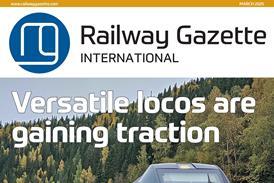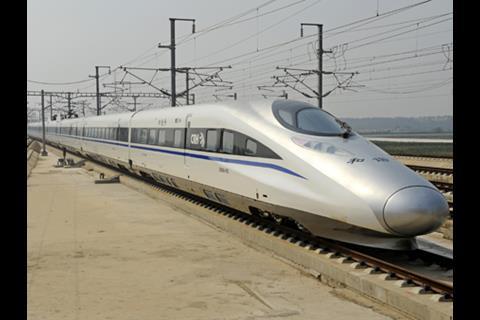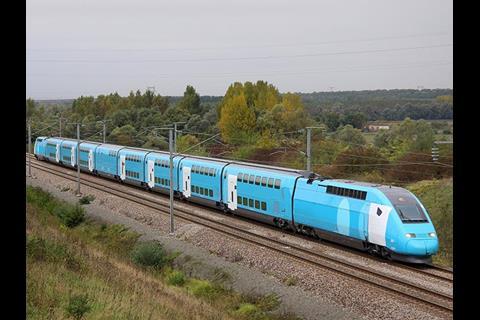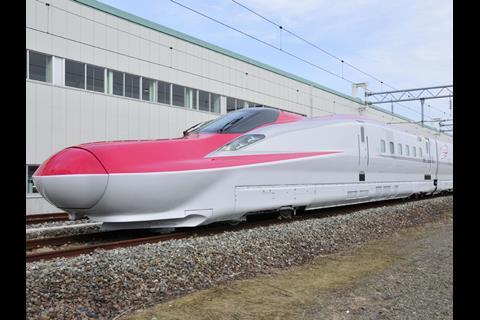INTERNATIONAL: China remains the pacesetter in the world rail speed race, according to the latest World Speed Survey published in Railway Gazette International on July 1.
Authored by Jeremy Hartill of the UK’s Railway Performance Society, the biennial survey compiles in tabular form the fastest timetabled start-to-stop journeys between different pairs of stations in countries around the world. Most of the fastest timings occur between intermediate stations, where average speeds are not impeded by slow approaches to major city hubs.
This year, the results show a general coalescence where frequency is the main driver of performance on many routes, with maximum speeds reaching something of a plateau at or slightly above 300 km/h. Our survey finds that the ‘blue riband’ award for the world’s fastest point-to-point rail journey is taken by China Railways Corp’s G66/79, which sprint between Shijiazhuang and Zhengzhou Dong in 81 min at an average speed of 283·4 km/h in each direction. Second in the list is a pair of express trains between Beijing and Nanjing, a distance of 1 021·9 km which is covered in 219 min at an average of 280 km/h.
France, Japan, Spain and Taiwan complete the top five countries by fastest point-to-point timing. A notable entry this year is Ouigo 6284, the third-fastest train in Europe which achieves 253·2 km/h on its run between Lyon St Exupéry airport and Marne-la-Vallée-Chessy station on the outskirts of Paris. Ouigo is the low-cost TGV operation launched by SNCF in April 2013.
The world’s fastest international train is a TGV running between Brussels Midi and Aéroport Charles-de-Gaulle, which records an average of 229·7 km/h, while Eurostar ES9010 manages the London – Paris journey in 140 min at an average of 210 km/h.
While the fastest point-to-point timings are often a reflection of fast runs between intermediate stations, journeys between city hubs are usually slower. Nevertheless, plenty of trains manage to break the 200 km/h mark, led by train G66 in China, which records an astonishing average of 250·1 km/h for the 2 001 km between Guangzhou Dong and Beijing Nan stations. Close behind is the AVE service between Madrid and Barcelona, where numerous trains achieve a 150 min timing for the 621 km journey.
Although Britain’s fastest journey is Southeastern’s Stratford International – Ashford service, where seven trains manage averages of 179·6 km/h over High Speed 1, the fastest trains on the East and West Coast main lines both manage averages in excess of 175 km/h. Virgin Trains East Coast manages the fastest city-to-city dash, with its daily 05.40 Edinburgh – London King’s Cross Flying Scotsman achieving 159·3 km/h. But the 110 km/h of Amtrak’s fastest Acela Express over the 735 km between Washington Union and Boston South show how far the USA still has to go in keeping pace with its peers elsewhere in the world.
Hartill suggests that in years gone by, a handful of express trains making high speed sprints used to capture the headlines, and stand out at the top of any comparative table. ‘Today, rather than running a few select trains, more and more railways are offering a consistent service, with large numbers of regular fast trains throughout the day’, he writes. This change is very apparent in the survey results, where many of the entries would once have been a single, often named, train.
‘Now the entries are increasingly being listed as “several trains” — in some cases up to 10 or more per hour. This suggests a significant shift in railway operating practice, with routes that were once considered premium targets for lavish express trains now regarded as fast commuter corridors’, he concludes.
The complete survey appears in the July issue of Railway Gazette International, which will be available to subscribers in our digital archive. It can also be purchased as a single issue via our tablet app, available in both the Apple iTunes store and on Google Play.























